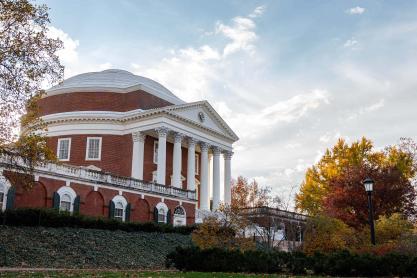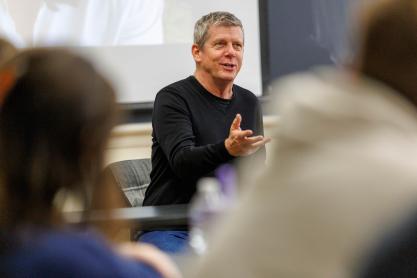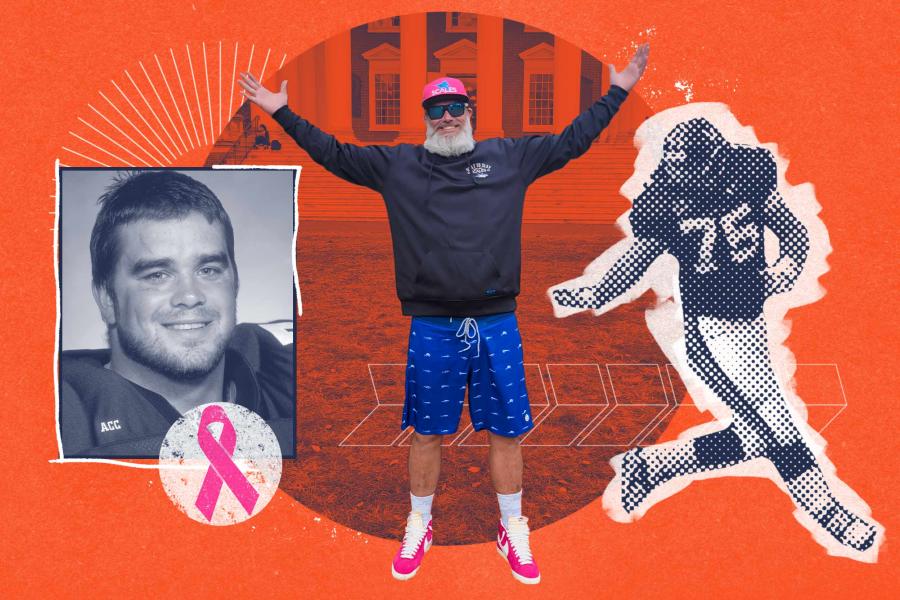Depending on your age and relationship status, your phone might be littered with dating apps like Hinge, Tinder and Bumble.
You might assume online dating goes back to the 2000s, at the earliest. But you would be wrong; the first forms of “computer dating” emerged in the middle of the 20th century, according to University of Virginia School of Data Science associate professor Mar Hicks.
Meeting that special someone via an algorithm may seem like a novelty, but Hicks says it’s not all that new.
Hicks, an expert on the history of computing and technology, talked to UVA Today about how online dating has changed since its beginnings and what’s remained the same.
Q. How did computer dating start?
A. Computer dating first started in the late 1950s and early 1960s, in a sort of informal way, as people – especially students – started to have access to computers at universities and started playing around with them.
You see a lot of examples of students experimenting with programming for fun or to play games. Computer dating started as one of these experiments before it was eventually commercialized. At this stage, people were doing a lot of experimenting to see how they might use computers in less conventional ways.
Q. Who first participated in computer dating?
A. Because the earliest examples of computer matchmaking were on university campuses in the U.S. and Europe, it was college students who were the first participants. These college students would use the mainframe to “match up” people for parties as a novel way of breaking the ice.
When it became clear that there might be a business idea in this, older people who weren’t in college began getting involved in computer matchmaking. In the U.K., with the first example of a computer dating business, the woman who ran it focused on people who were working professionals or even older people like widowers and divorcees.
At the time, this kind of thing was a little scandalous – not because of the addition of a computer, but because “marriage bureaus” like this were sometimes suspected of being middlemen for pairing up women with men for “dates” in a way that might be more about money and short-term fun than marriage.
In the U.S., the earliest computer dating business kind of avoided this because it grew out of the college scene and focused on younger, college-adjacent people.
Q. What has remained consistent about online dating?
A. People are still asked to put a lot of faith in matchmaking algorithms. They’re given some choice, but they also are being primed to accept there’s a programmatic decision-making process that is on their side.
Yet, even from quite early in the history of computer dating, we see this isn’t always the case. One relatively early computer dating business in the U.K. that was a bit unscrupulous was accused of adding women into its database who didn’t actually apply, because they needed more women to balance out the pool.
Another one was shown to have left dangerous, violent men in their pool of potential daters, even though they’d been warned by multiple women who’d been paired up with them, because those men were paying customers. With online dating today, we see similar issues with how profit can get in the way of making it a safe or a positive experience, especially for women who are seeking men.
Q. What has changed about online dating?
A. One thing that’s changed is that the groups who are served by it are so much wider. When it started, the idea was that it was primarily for straight men and women who were ultimately looking to get married to people of the same race and class.
Nowadays the race and class divisions of early matchmaking are not as rigid, and people who are queer are not only allowed on the main dating sites, but there are also all types of apps devoted specifically to the LGBTQ community. There are also apps and platforms that are for people who are not interested in meeting someone for the purpose of getting married, and that no longer has the same kind of social opprobrium attached to it.
Q. Many nervous dating app users follow a download-delete-redownload cycle. Did computer daters do something similar in the past?
A. I think this was less of a pattern in the past, simply because the people who were using these services in the past did not have the same level of convenient access to starting and stopping the service, and also the services cost relatively more.









